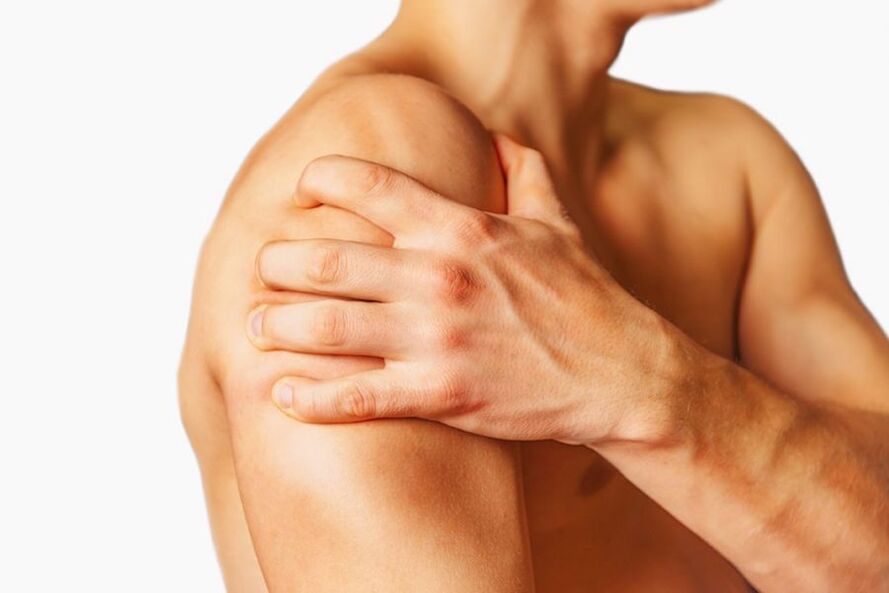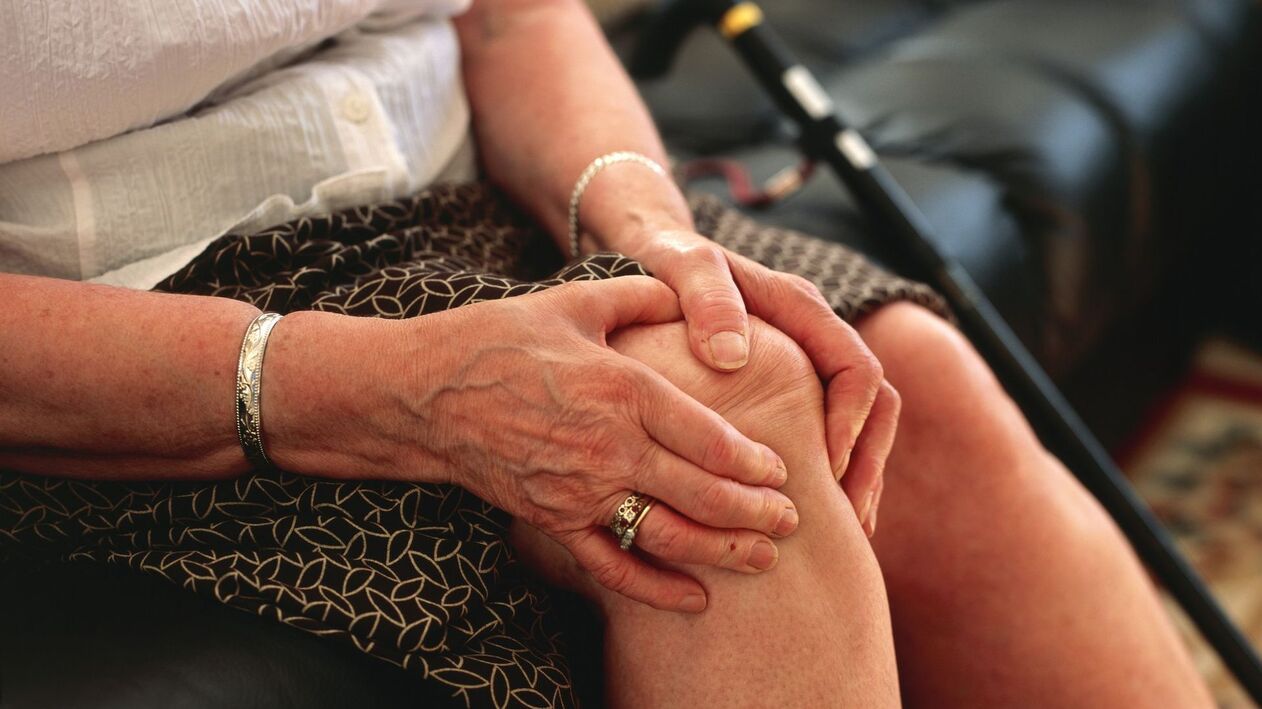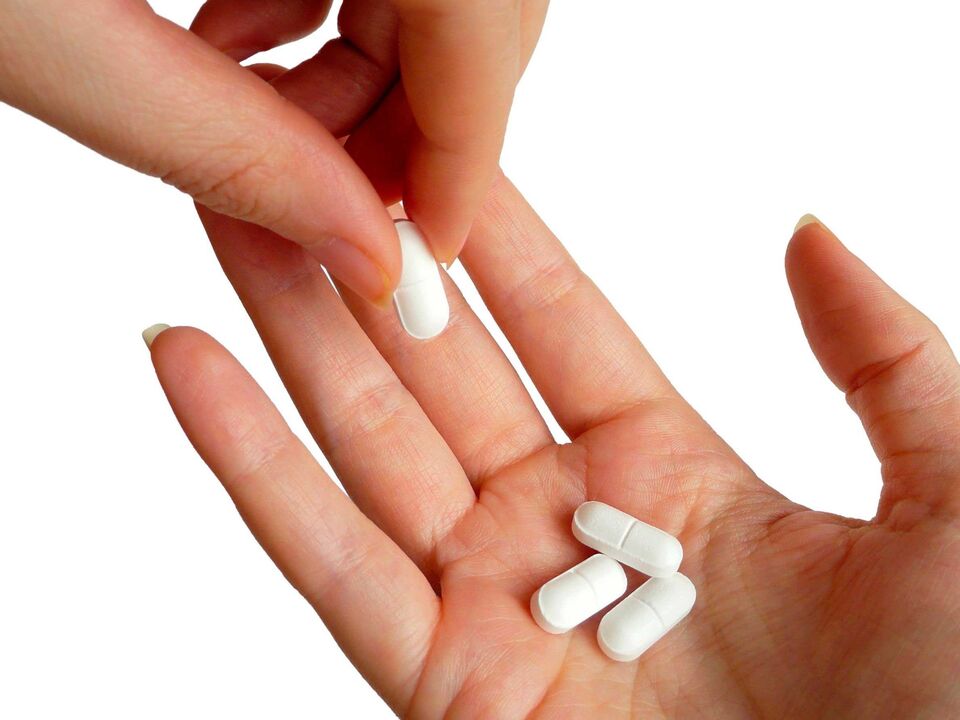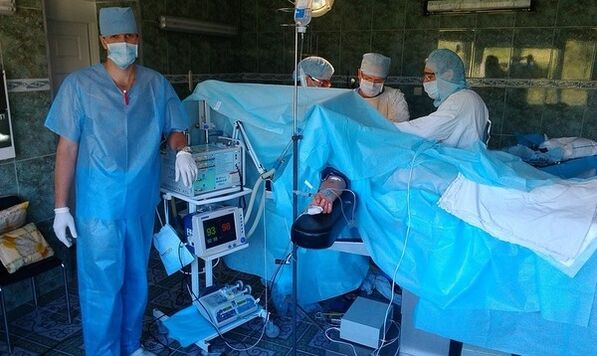
Arthritis can affect any joint, while degenerative-dystrophic changes can be isolated or occur in several joints at once.
Although this disease is not life-threatening, it significantly reduces the quality of life. Severe pain, limited mobility that increases over time, causing disability.
In the early stages, conservative therapy is prescribed, which helps to stop the development of the disease.
It is difficult to completely cure degenerative joint deformities (DOA), but it is possible to preserve the functions of the bone joints. In the later stages, only surgical treatment will help.
Development Mechanism
Many people have heard of such a disease as arthrosis, but not all of them understand what it is. To do this, you need to understand how joints work.
The surfaces of the bones that make up the joints are covered with elastic, slippery cartilage, which cushions and protects them from damage. With osteoarthritis, the blood supply to this area is interrupted and the hyaline cartilage begins to deteriorate. Furthermore, degenerative-dystrophic changes occur to the capsule, ligaments, periarticular muscles, and other segments of the joint.
Usually the disease develops slowly, but the pathological process can accelerate under the influence of external factors. Much depends on the characteristics of the patient's body, comorbidities, lifestyle.
Osteoarthritis develops this way:
- Blood circulation is impaired in a certain area of the cartilage layer of the joint, after which it begins to suffer from a lack of nutrients. Under the influence of traumatic factors, the damaged area increases.
- The body replaces defects in the cartilage layer of joints with mineralized tissue, which has no clear structure.
- Gradually, pathological growths (osteocytes) appear on the hyaline coating.
- Against the background of the pathological process, healthy areas of cartilage are exposed to excessive stress. As a result, the work of the joint is interrupted and its surfaces are gradually destroyed.
Careful!Arthritis causes destruction of the bony surface of the joint, inflammation of the synovial membrane, compression of the joint capsule. The joint space is narrowed, the joint is deformed, destroyed, then the patient can be disabled. Therefore, timely diagnosis and initiation of treatment are very important.
As a rule, rheumatic diseases are detected in patients over 60 years of age. However, the disease is also diagnosed at a young age - from 20 to 45 years old.
Authority to solve. Arthritis and rheumatoid arthritis are similar, so many patients are interested in the question of how the first is different from the second. With DOA, only the joints are affected, and arthritis is characterized by inflammatory damage not only at the bony junction but also in the internal organs (liver, kidney, heart). This is the main difference between these pathologies.
Classify
People near and far with medicine, when they hear names like gonarthrosis, coxoarthrosis, osteoarthritis, do not understand the difference. The fact is that there are many types of this pathology, differing in localization, course specificity, reasons, origin. Therefore, doctors have created several classifications of rheumatic diseases to make them easier to distinguish.

Types of joint diseases by localization:
- Gonarthrosis is a pathological process in the knee.
- Coxarthrosis is an injury of the hip joint.
- Uncovertebral - deformation of the cervical spine.
- Dystrophic changes in the shoulder joint.
- Interphalangeal - deformation of the joints between the bones of the bones.
- Osteoarthritis is a degenerative change in the joints of the spine.
- Ankle - Wear on the ankle joint.
- Polyarthritis is a condition in which multiple joints of the fingers are affected.
In addition, there are diseases of the jaw joints, temples, vertebrae, collarbone - muscles.
Depending on the characteristics of the course, the following types of pathology are distinguished:
- Deforming arthropathy is a stage 3 disease. It is a progressive disease requiring immediate surgery.
- Arthritis - destruction of the cartilage lining, inflammation.
- An acute illness in which characteristic symptoms become more apparent.
- Chronic arthritis is a condition of slow destruction, the cartilage layer thinning with a process of eradication.
Depending on the reason, a distinction is made between:
- Dystrophic osteoarthritis - occurs due to a metabolic disorder.
- Joint fracture - develops as a result of a fracture.
- Post-traumatic - the disease occurs after a joint injury.
DOA varieties by origin:
- Primary (idiopathic) - occurs for no apparent reason, usually due to age-related changes in the joints.
- Secondary disorders - degenerative-dystrophic causes multifactorial (metabolic disorders, hormonal imbalances, trauma).
Doctors distinguish protozoan infections and multiple sclerosis. In the first case, 1 joint is affected, and in the second case, all joints are destroyed at once. The last type of disease is called systemic arthropathy, in which 3 or more joints are deformed.
Pathological level
According to symptoms and progression, 4 stages of DOA are distinguished:
- 1 degree.The shape and structure of the joints have not changed, so the disease has a latent course. Over time, patients experience mild discomfort in the affected area, especially after excessive exertion or sudden movement. The composition of the synovial fluid changes, the blood supply to the joints is interrupted. The muscle fibers surrounding the joint are weakened.
- Level 2.The joints begin to collapse, bones grow on their surface. Moderate pain occurs, inflammation occurs cyclically. During movement, you will hear a characteristic crunching sound in the affected joint. The function of the muscles is reduced due to the disordered nutritional properties of the nerve tissue.
- 3 degrees.There are pronounced degenerative disorders of the hyaline cartilage and joints, because of this, the axis of the limb is bent. Ligaments and muscles shorten, joints become pathologically movable, but movements are significantly restricted. Patients often have incomplete dislocation.
- 4 degrees.Complete destruction of bone connections, complete immobilization, as well as severe pain syndrome even at rest.

Important. In the late stages of osteoarthritis, only arthroplasty is effective (replacing the affected joint with a prosthesis).
Cause of DOA
The question of why the disease occurs is quite concerning. Doctors distinguish between internal (certain diseases, bad habits, unhealthy diet) and extrinsic (injury, characteristics of occupational activity) causes of osteoarthritis.
Often secondary degenerative-dystrophic disorders develop against the background of an inflammatory process:
- Infectious diseases cause many types of viruses and bacteria.
- Rheumatism.
- Autoimmune diseases.
- Purulent arthritis.
- Gout (deposition of uric acid salts on the surface of bones).
- Joint psoriasis.
DOA can occur due to abnormalities in cartilage structure and malnutrition. Pathological changes are caused by the following factors:
- Hereditary disorder.
- Pathologies that appear during intrauterine development.
- Age-related changes in the body.
- Osteoporosis (increased fragility of bones due to calcium deficiency).
- Hormonal imbalance.
- Disorders of metabolism.
- Lack of vitamins and minerals.
- Pathologies associated with muscle weakness.
- Prolonged poisoning.
Exacerbations of diseases of the musculoskeletal system also cause degenerative changes in the cartilage tissue.
External factors for the development of joint disease include:
- Frequent hypothermia.
- Dislocation.
- The impact of great force on the joint area.
- Fracture.
- Damage to meniscus.
- Excessive physical activity associated with professional sports or occupational activities.
- Fat.
- Surgery on joints or structures around joints.
Regardless of the cause of DOA, it is important to first identify the cause of the pathological changes, and then treat the consequences.
Authority to solve.Idiopathic arthritis occurs on its own for no apparent reason.
Symptom
Joint disease is manifested by the following symptoms:
- pain syndrome;
- limitations of portability;
- crunching when moving;
- edema, change the axis of the joint.
These are characteristic symptoms that occur in all patients.

The initial signs of the pathology are unpleasant sensations in the affected area, which appear after physical exertion. After the onset of discomfort, you should consult a doctor, since the disease can be cured in its early stages.
Subsequently, the patient complained of mild moderate pain that appeared after loading the damaged joint and rapidly disappeared.
The decrease in mobility of the bony junction indicates degenerative changes in its structure. Initially, the patient has a feeling of stiffness, especially in the morning. The later, the more difficult it is for the patient to perform motor movements. With further development, movement restriction occurs even with additional assistance. If left untreated, the joint will develop spasticity and over time, the movement of the joint will be blocked.
Many patients complain of joints crunching with movement, accompanied by pain and reduced mobility. As the disease progresses, this manifestation becomes more pronounced.
In the later stages, the axis of the limb is bent, and the articular membrane is deformed. This shows that the bone connection has in fact collapsed and that healthy tissue has been replaced by osteoclasts. At this stage, the neighboring joints are subjected to strong impact, then the possibility of their cartilage damage increases.
Diagnostic setting
If you notice signs of degenerative joint disease, seek medical attention immediately. A diagnosis of DOA is established after conducting an examination, performing laboratory and instrumental studies.
First, an imaging exam is done, during which the doctor can notice swelling in the affected area. Furthermore, palpation is performed, allowing you to determine the tenderness, nodules, changes in temperature and moisture of the skin.
Comprehensive diagnosis involves laboratory research. Blood tests may reveal an inflammatory process, manifested by an increase in ESR (erythrocyte sedimentation rate), an increase in uric acid levels. Urine tests are done to determine protein levels.
Arthritis is diagnosed using the following instrumental studies:
- X-rays help to see changes in the shape of the joint.
- Arthrography using contrast is a more accurate diagnostic method than X-rays.
- CT is used to evaluate the structure of the joint.
- Radionuclide diagnostics are performed using radiopharmaceuticals. This study allows you to evaluate the anatomical and functional state of the connection.
Magnetic resonance imaging is a modern, highly informative diagnostic method. On examination, you may see deformity of the damaged joint, rupture of meniscus or ligaments.
To check the bursa, doctors recommend a puncture of the affected limb.
After diagnostic measures, the doctor prescribes a treatment plan.
Remedy
With any stage, medical attention is needed. Complex therapy in the early stages helps to put an end to pathological changes and restore the function of the joints. If a patient finds a doctor at a late stage of DOA, the prognosis is poor.

With grade 1 arthrosis, drug therapy is carried out. Chondroprotectors are used to restore the structure of the cartilage mucosa. Patients are prescribed the drug in the form of tablets and capsules. They need to be taken in 3-4 month courses twice a year. The drug contains structural elements of the cartilage mucosa.
Nonsteroidal anti-inflammatory drugs (pills, injections) help relieve pain.
Treatment of DOA is carried out using physiotherapeutic methods:
- Magnetic therapy.
- Ultrasonic therapy.
- Electrophoresis.
- Shockwave therapy.
- Paraffin therapy.
- Sludge treatment.
Physical therapy exercises and physical therapy are performed after the pain disappears. The doctor prescribes a series of exercises that the patient must perform systematically. Exercise therapy increases muscle tone, strengthens ligaments, normalizes blood circulation and helps with joint recovery.
During and after treatment, it is recommended to rest, reduce the load on the diseased joint with the help of bandages, crutches, canes.
Sometimes the patient is prescribed massage. After one course, the blood supply to the affected area is improved and the pain is reduced.
During treatment, the patient must eat properly. You should give up sugar, flour, fatty, spicy foods, potatoes, tomatoes, eggplant. And should quit bad habits (alcohol, smoking) forever.
For joint disease, intra-articular injections are used:
- Glucocorticosteroids help to normalize the blood supply to the affected area, suppress the inflammatory process and increase the elasticity of bone tissue.
- Synovial fluid analogues with chondroprotective properties. These drugs relieve pain, improve joint mobility, and accelerate the production of collagen and elastane.

In the final stages of DOA, surgical treatments are used:
- Endogenous drugs.
- Arthrodesis.
- Arthroscopy.
In advanced cases, the doctor replaces the destroyed compound with a metal prosthesis. Usually, this method is used to treat large joints. After surgery, the patient's quality of life improved.
If joint surgery is not possible, then the patient will be indicated for joint surgery. During surgery, the bone surfaces are fixed with a special plate. Arthrodesis helps relieve severe pain, but does not restore joint mobility.
During arthroscopy, a miniature camera and manipulators are inserted into the joint cavity, with the help of which the growth bone is removed and the cartilage structure is restored. The video camera allows you to keep track of all the actions on the screen. As a rule, surgery is performed for gonoarthrosis, but its effects are short-lived.
DOA is dangerous, so it's important to identify and treat it promptly.
Comment
According to patients who have experienced joint disease, it is easiest to cure the disease in the early stages. In severe cases, only surgery will help. But in either case, the treatment should be comprehensive.
- The first review: "I was diagnosed with grade 2 knee effusion 1 year ago. I took special medications, did physical therapy, and dieted. At first the pain was gone, and my mobility was restored. but after 3-4 months the symptoms returned again. Sometimes the pain was accompanied by an increase in temperature. The doctor recommended me to take capsules with hondoprotectors. With them my condition improved. , for six months now I don't feel pain anymore. "
- Second review: "A few years ago, I was diagnosed with grade 3 coxoarthrosis. I was in pain all the time, even at night I couldn't move my legs normally. The doctor advised me to have surgery, but atI initially refused and decided to try endoarticular injections. However, after the sessions, my condition did not change much. As a result, I decided on a radical approach. After the endoscopy, shehas been recovering for 1 year and 3 months. During this period she takes medicine, does special exercises, goes for massage, physiotherapy, diet. Now I am living a contented life. advise people not to procrastinate with treatment. "
- Third review: "I was diagnosed with a ruptured inner meniscus of the knee and grade 1 fibroma after an MRI. The doctors prescribed chondroprotectors. I also use the ointment twice a day. Toprotect my knee, i used an orthotic, i just take it off at home when i rest. after the injection started electrophoresis, paraffin therapy, also bought the magnetotherapy machine, done 10 sessions. After another diagnosis, the doctors said that the joint has recovered 70%. I continue the treatment and hope to be able to fully recover my leg ".
As you can see, there are different types of joint diseases. To avoid surgery and restore joint function, you need to see a doctor at the first suspicious signs. Only a doctor can determine the type and complexity of the disease and prescribe an appropriate treatment plan. DOA is easier to treat early on.















































